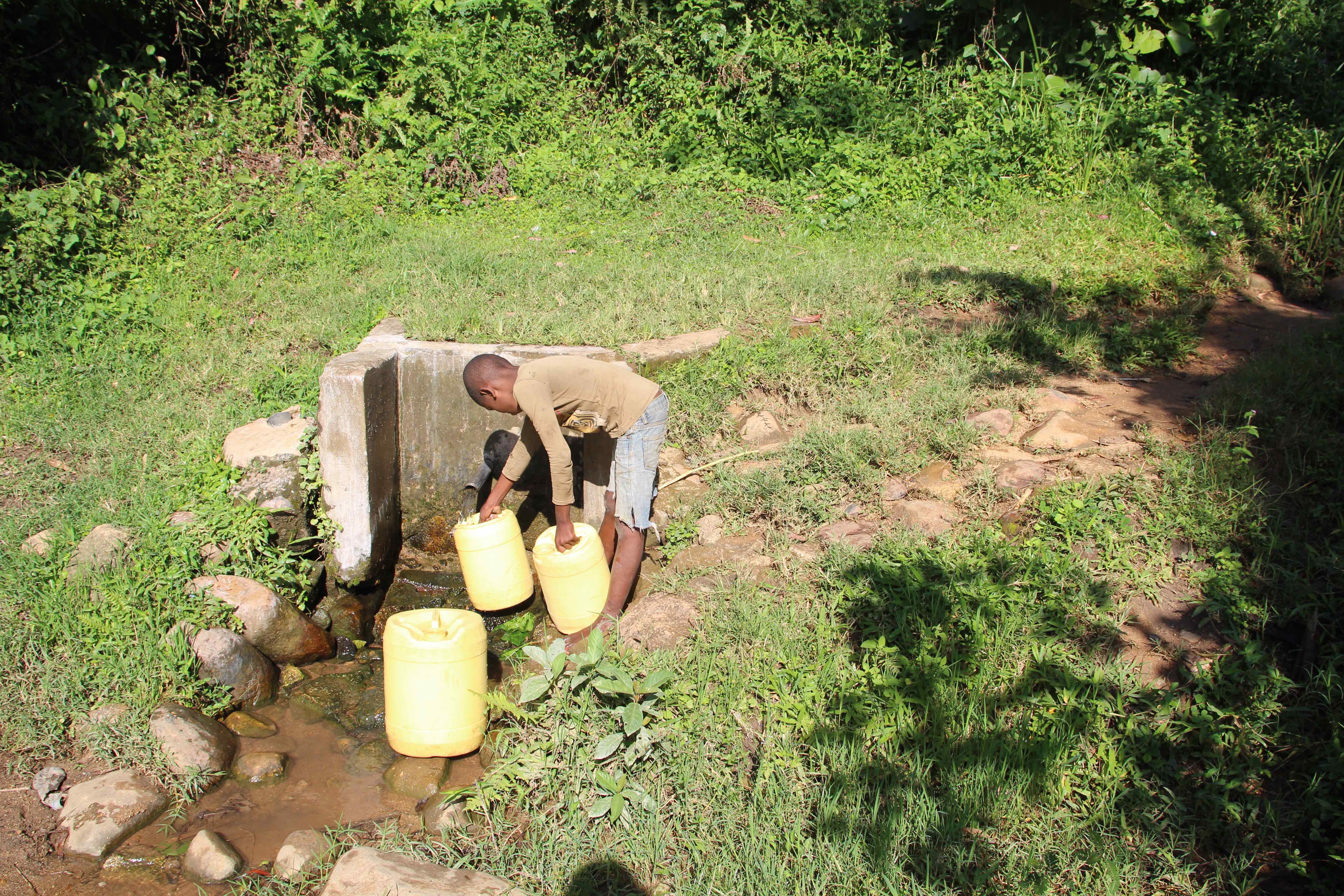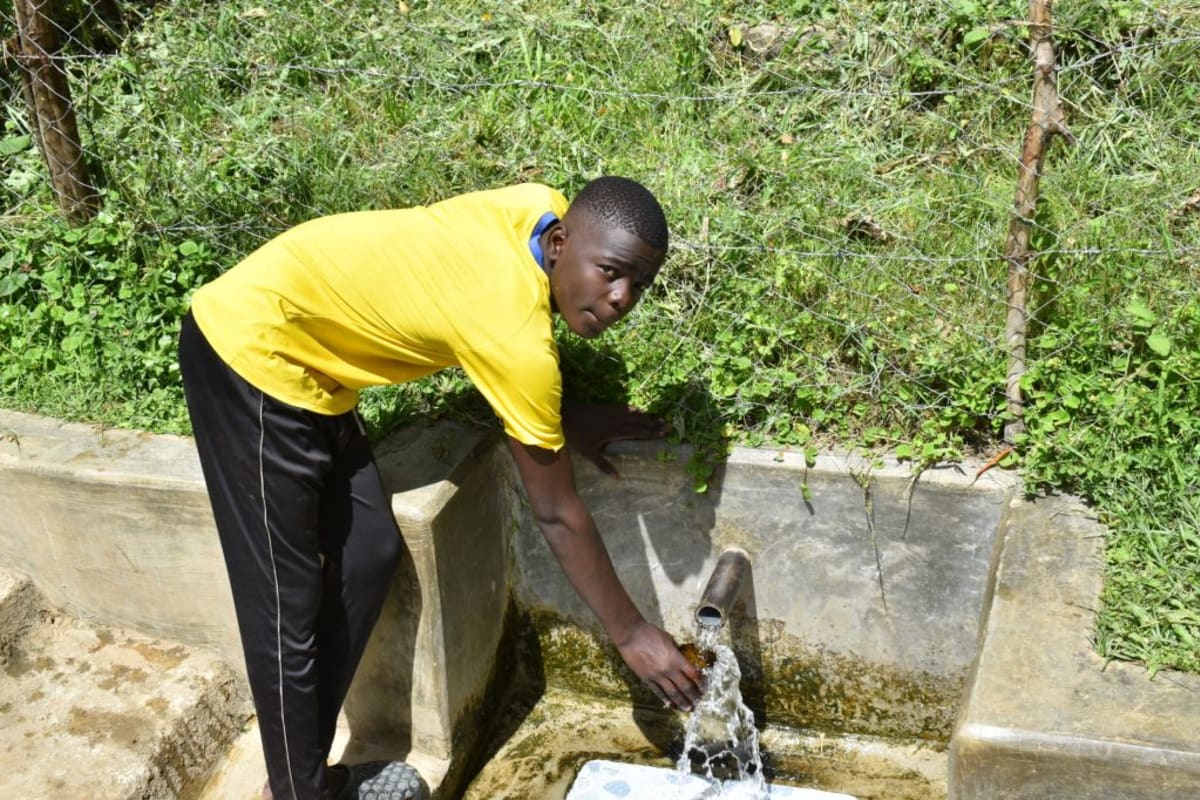Mugonjia Spring in Musaa Shikoti in Western Kenya relies on a single water source for 120 people. The water source, a spring, is unprotected and open to several different types of contamination from people, animals, and farm runoff.
A recent attempt by someone to protect the spring was unsuccessful because they did not do it correctly. The water flow was disrupted, which slowed it down and led to overcrowding and delays as people waited to collect water.

Melody K., a 12-year-old girl who has the responsibility of collecting water for her family, shared, "Personally, I have been punished on several occasions by my mother for delaying at the spring. How I wish the spring will be protected so I can take the shortest time possible at the spring."
Community members also continue to get sick from drinking contaminated water. They lose valuable income when they become ill and must pay to treat preventable diseases. Other essential family needs, like schooling fees for children, must wait, as they do not have the income to pay for both.
Moses Nandwa, a 40-year-old father who makes his limited livelihood as a farmer, shared, "I remember there was a time I couldn't pay my last born's school fee. I was admitted to the hospital, and the bill was abnormal. My daughter had to stay at home for one term because I couldn't afford to pay the hospital bill and school fees as well."
The whole community is looking forward to the spring being protected properly and willing to provide all needed materials. They are also excited about the promised hygiene and sanitation training once it's constructed. They're ready to learn!
What We Can Do:
Spring Protection
Protecting the spring will help provide access to cleaner and safer water and reduce the time people have to spend to fetch it. Construction will keep surface runoff and other contaminants out of the water. With the community's high involvement in the process, there should be a good sense of responsibility and ownership for the new clean water source.
Fetching water is a task predominantly carried out by women and young girls. Protecting the spring and offering training and support will, therefore, help empower the female members of the community by freeing up more of their time and energy to engage and invest in income-generating activities and their education.
Training on Health, Hygiene, COVID-19, and More
To hold trainings during the pandemic, we work closely with both community leaders and the local government to approve small groups to attend training. We ask community leaders to invite a select yet representative group of people to attend training who will then act as ambassadors to the rest of the community to share what they learn. We also communicate our expectations of physical distancing and wearing masks for all who choose to attend.
The training will focus on improved hygiene, health, and sanitation habits in this community. We will also have a dedicated session on COVID-19 symptoms, transmission routes, and prevention best practices.
With the community's input, we will identify key leverage points where they can alter their practices at the personal, household, and community levels to affect change. This training will help to ensure participants have the knowledge they need about healthy practices and their importance to make the most of their water point as soon as water is flowing.
Our team of facilitators will use a variety of methods to train community members. Some of these methods include participatory hygiene and sanitation transformation, asset-based community development, group discussions, handouts, and demonstrations at the spring.
One of the most important issues we plan to cover is the handling, storage, and treatment of water. Having a clean water source will be extremely helpful, but it is useless if water gets contaminated by the time it is consumed. We and the community strongly believe that all of these components will work together to improve living standards here, which will help to unlock the potential for these community members to live better, healthier lives.
We will then conduct a small series of follow-up trainings before transitioning to our regularly scheduled support visits throughout the year.
Training will result in the formation of a water user committee, elected by their peers, that will oversee the operations and maintenance of the spring. The committee will enforce proper behavior around the spring and delegate tasks that will help preserve the site, such as building a fence and digging proper drainage channels. The fence will keep out destructive animals and unwanted waste, and the drainage will keep the area's mosquito population at a minimum.

 Protected Spring
Protected Spring
 Rehabilitation Project
Rehabilitation Project








































